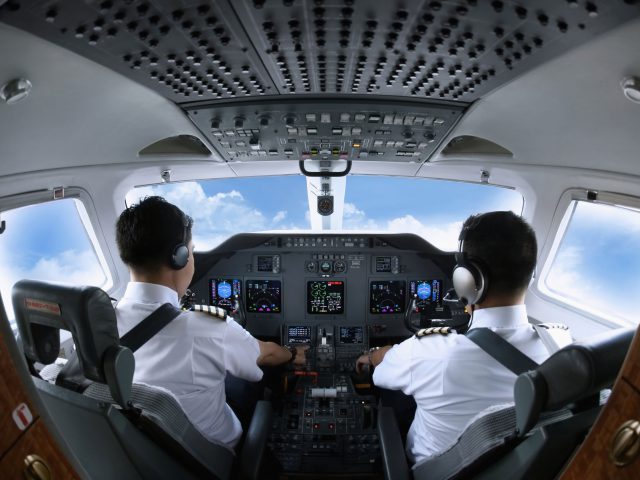
By Jay Hull
My mentor and friend, Mike Schmeer, is a lawyer and a pilot. I am not a pilot. I’m not at all afraid to fly in an aircraft of any type or size, but I would be scared out of my wits to fly an aircraft. So, I am offering these comments simply based on my understanding of how pilots learn to fly, how they train, and how they respond to emergencies, from my research and conversations with pilots.
As transactional lawyers, Mike and I have closed many high-value, high-stress deals over the decades. But the stress of closing a deal, even a really big deal, is nothing compared to the stress of flying an aircraft when something important goes wrong. Pick an example – engine failure, perhaps? Mike explained to me that, during his training, the instructor would from time-to-time simply turn off the engine so that Mike (the student pilot) would gain experience dealing with what (to me) would be an utterly terrifying event. I gather pilots think it’s fun to do this. When the engine finally gives up on my 1983 Honda Accord someday, I will simply pull over to the side of the road and call for a tow, but that is not an option when the engine gives out mid-flight. Pilots need to know what to do when this happens. Calling the mid-air tow truck is not an option.
Given our shared love of process-thinking and checklists, and Mike’s experience as a private pilot, Mike asked if I had a guess about the first and most important step when the engine stops. I had in mind all kinds of complicated instructions and reminders, including informing the world that you are in trouble and looking for a safe place to land. But the first action, Mike explained, is a simple one: “fly the aircraft”.
What a beautiful first principle: fly the aircraft. When things are falling apart around you, and alarms are buzzing, and lights that shouldn’t be lit are lit, and lights that should be lit aren’t lit, just fly the aircraft. Don’t make things worse by shifting focus to lesser priorities. And what could be a higher priority than keeping the aircraft in the air until you are ready for a safe landing?
There are many areas of life (certainly including our work) that would benefit from this mindset in the midst of a crisis:
- First, don’t make things worse.
- First, encourage and support your employees or members of your team when a life-threatening pandemic hits.
- First, take care of the relationships that matter most.
- First, maintain your integrity when tempted or pressured to do otherwise because of sudden and dramatic business change.
- First, love a child and help her work through a sad event.
- First, keep generating the revenue that the business needs to survive while you prepare to attend to the emergency.
- First, support your key personnel and attend to the organizational health of your team or company while you prepare to shift some of your attention (or all of someone else’s attention) to a crisis on your senior leadership team.
- First, aviate: fly the aircraft.
When I discussed this with another friend, who is the Chief Fixed Wing Pilot for an aviation company, he did me the tremendous favor of both confirming and expanding upon what I learned from Mike. When I asked him about the “first, fly the aircraft rule”, my Chief Pilot friend, responded with three words: “Aviate. Navigate. Communicate.” It turns out that this first lesson I learned, to fly the aircraft despite all else, is only the beginning of a system of thought and action designed to increase the likelihood of a successful outcome after a mid-air crisis.
From the earliest days of flight training, pilots are taught an important set of priorities that should follow them through their entire flying career: Aviate, Navigate, and Communicate. The top priority — always — is to aviate. That means fly the airplane by using the flight controls and flight instruments to direct the airplane’s attitude, airspeed, and altitude.
First, aviate. In other words, as we have been discussing, fly the aircraft. Nothing is more important. But once you have established positive control of the aircraft, now what?
Second, navigate. Where are you going? Are you going to land straight ahead? Are you going to return to the airport from which you departed? Or are you going to navigate for a landing in the Hudson River, as Captain Sullenberger did on January 15, 2009.
[You can learn more about that amazing landing here: Air Traffic Controller of USAirways Flight 1549 Hudson River Landing “the Lowest Low I’ve Ever Felt” and here: Captain Sully’s Minute-by-Minute Description of The Miracle On The Hudson | Inc. The recording of the air traffic controller is here: NTSB Crash Animation US Airways 1549 w/ CVR and audio Hudson.]
Third, communicate. After first establishing and maintaining positive aircraft control, and then setting a navigation plan, inform everyone who needs to know: air traffic control, other crew members, passengers.
What can we learn from this pilots’ mantra? Is your team (or family) in trouble? First, aviate. Keep the plane in the air. Stabilize – even if it only takes a few seconds to gain positive control – and then you can ask, where do we go from here?
In the next installment, we will focus additional attention on what it means to “aviate” in a business setting. In subsequent installments we will shift our attention to the “navigating” and “communicating” that need to happen after you have achieved positive aircraft control.
Happy aviating!







